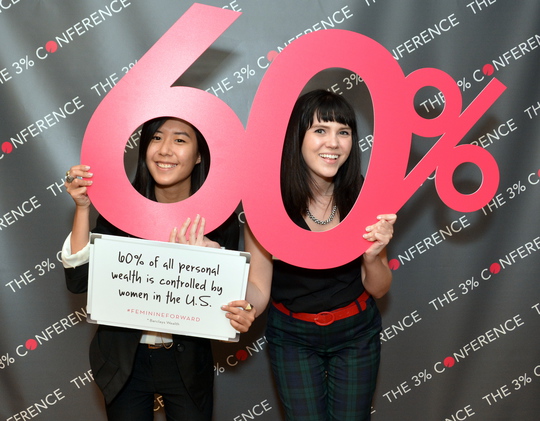STUDY: 11% of Creative Directors Are Now Women
Last year, the 3% Conference held its inaugural event. In various ways, the conference came at the fact that just 3% of creative directors are women. I was there and it was an insightful, educational experience.
Sadly, I can't make this year's conference but there is good news to share. The conference may have to change its name because women now make up 11% of all creative directors.
Nine years ago, University of Texas graduate student Kasey Windels wrote a dissertation entitled,"Proportional Representation and Regulatory Focus: The Case for Cohorts among Female Creatives" and a follow up paper entitled "An Exploration into the Representation of Female Creatives in Today's Advertising Agencies." As part of that work, she examined the genders of award winners in the 1984, 1994 and 2004 Advertising Annuals of Communication Arts to arrive at the fact that just 3.6% of creative directors are female.
Obviously, it's been a while since that study and things have changed. A new study has been conducted by The 3% Conference. That study followed the very methodology of the initial study by examining the 2013 Communication Arts Advertising Annual. And that 3.9% has increased by 319% to 11.5%.
Kat Gordon, founder of the 3% Conference, is well aware of the fact that this type of research is far from perfect and far from accurate and she's advocating for better metrics around the topic that take into consideration that award winners may not be an accurate representation of the actual numbers of women who work in creative. In addition, a look at broader range of titles would help as well. She notes that the Bureau of Labor Statistics does not currently measure Creative Director as a title making it difficult to arrive at a comparable metric in relation to other industries.
From the study:
Women control 73% of consumer purchasing and $20 trillion of the world's annual consumer spending. They are more active on social networks and more likely to share a brand's message with others. Women also represent the majority of early tech adopters4, social gamers5, and are amassing wealth at rates that will culminate in control $22 trillion of US wealth by the end of this decade.But perhaps the figure that matters most comes from Greenfield Online for Arnold's Women's Insight Team, where 91% of women reported they didn't think that advertisers understood them.
In short, the consumers who brands should want to fall in favor with most report overwhelming dissatisfaction with the way brands speak to them. While good creatives are trained to market anything to anyone, a 97% skew (now recalculated to 89% skew) creates a level of groupthink that represents a group not holding the consumer reins.
The advertising industry does not have a recruitment problem, but a retention
problem when it comes to gender diversity in creative departments. Portfolio schools are
graduating equal (if not greater) number of women than men. Yet these same women "disappear" from the field right around the time they have the appropriate level of experience to be CDs. The 3% Conference tackles the many reasons why: lack of mentorship, lack of visibility of female CDs, award show jury bias, lack of support for motherhood and other factors.
Gordon urges advertising agencies to take a company-wide look at the state of gender diversity to arrive at a benchmark from which benchmarks and goals can be set and from which measurements of progress can be made. She argues the same effort should be applied to ethnic and cultural diversity, long a hot (and, frankly, never solved) topic in the advertising industry.
The next 3% Conference will take place November 3-4 at the Intercontinental Hotel in San Francisco


